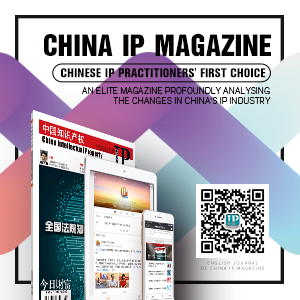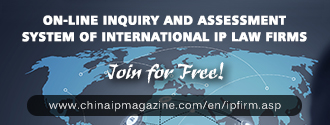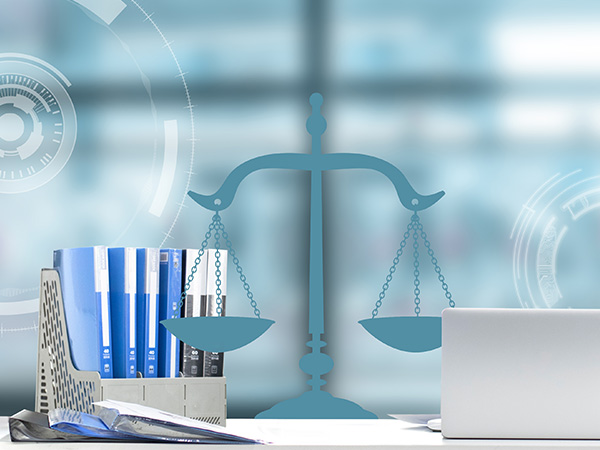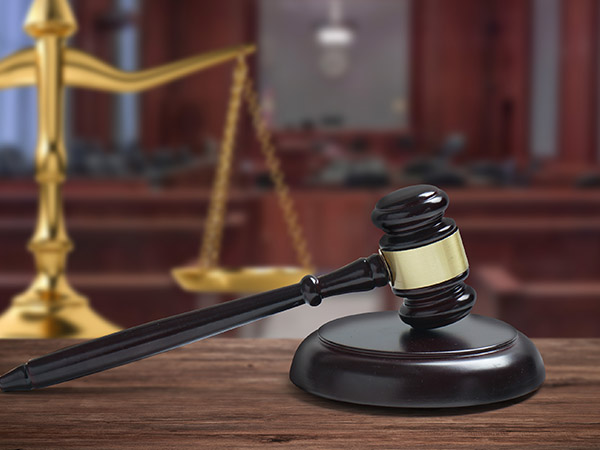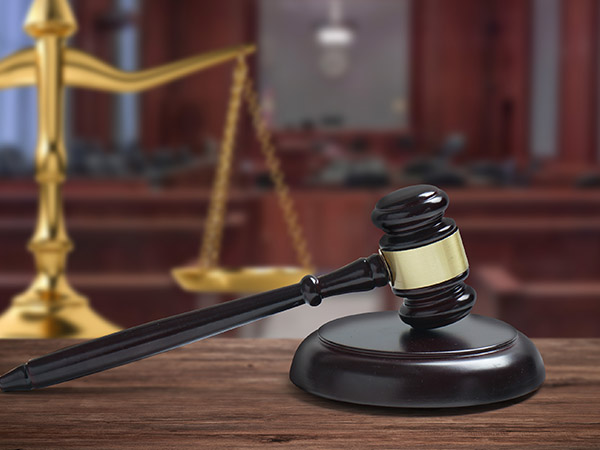New Development in Chinese Practice on Calculation of Patent Damage Awards
Nie Huiquan
Partner, Assistant General Manager of Lung Tin Intellectual Property Agent Ltd.
With the progress of a new round of global boom in technology and industry, China is becoming the main battlefield of patent infringement disputes. In order t o impel innovation-driven development strategy and to enhance protection of patent right, Chinese courts are attempting to change such a situation where in patent infringement cases are always time-consuming and too big burden of proof is always put onto the patentee while too low damage awards are always given.
Several recent patent infringement cases have drawn attention of the public because those cases were decided with damage awards substantially higher than the past. In an IWNComm v. Sony first instance invention patent infringement case issued on March 22, 2017, Beijing IP Court set a record of damage award by ordering Sony China to pay IWNComm totally 9,103,367 Yuan, including an economic loss of 8,629,173 Yuan and a reasonable expenditure of 474,194 Yuan. On April 6, 2017, Huawei got a decision from a first instance court ordering Samsung to pay a 80 million Yuan damage award which Huawei claimed in one of a series of patent infringement cases against Samsung. On December 22, 2017, Huawei got a second instance judgement from Fujian Higher People's Court who concluded that the 80 million Yuan damage award was reasonable.By those cases, local Chinese courts are probing into calculation of infringement damages and seeking for a refined standard of determining damage award for patent infringement, which is of great significance for increase of damage award in patent infringement cases.
With reference to several newly issued intellectual property infringement cases, this article discusses how Chinese courts determine damage awards based on market value recently, so as to provide some guidance for future cases.
Statutory Base for Calculation of Damage Awards in Patent Infringement Cases
Article 651 of the Patent Law of the People’s Republic of China (Article 65 of the Patent Law) articulates the methodologies of computing patent infringement damages and prescribes that the damages shall be determined in the order of : (i) patentee’s losses; (ii) infringer’s profits; (iii) patent royalties; and (iv) statutory damages (10,000 Yuan to 1 million Yuan).
The Several Provisions of the Supreme People’s Court on Issues Concerning the Law Applicable in the Trial of Patent Disputes2 explains in details how to apply Article 65 of the Patent Law, provides in Article 203 formulae the calculation of patentee’s actual loss and infringer’s profits, states in Article 21 that the people’s court may reasonably determine the amount of compensation with reference to the multiple of the license fee according to the type of patent concerned, the nature and circumstances of the infringement, the nature, scope, and period of validity of the patent license, and other factors, and states in Article 22 that the reasonable expenses paid by the patentee to stop the infringement can be calculated by the people’s court in addition to the amount of compensation determined in Article 65 of the Patent Law.
Article 27 of Interpretations (II) of the Supreme People’s Court on Several Issues Concerning t h e Application of Law in the Trial of Cases Involving Patent Infringement Disputes (Interpretation (II)) provides certain rules on the burden of proof of the amount of compensation in the patent infringement litigation.
Based on preliminary infringement evidences provided by the patentee, the people’s court may put the burden of proof onto the infringer who possesses relevant evidence of infringement.
Current Judicial Practice on Calculation of Damage Awards in Patent Infringement Cases
Despite the above provisions, in practice, statutory damage scheme was commonly used because of, for example, the patentee’s limited ability to collect compensation evidences and lack of implicit license fee.
It is reported that, Changsha Intermediate People ’ s Court has made statistical analysis of the 3309 intellectual property infringement dispute cases tried thereby from October 21, 2010 to December 31, 2015.The analysis of the damage data shows that: in 53% of the cases, the damage award is less than 10,000 Yuan; in 39% of the cases, the damage award is in the range of 10,000 to 50,000 Yuan; in 5% of the cases, the damage award is in the range of 50,000 to 100,000 Yuan; in only 3% of the cases, the damage award is greater than 100,000 Yuan; as high as 98.2% of the cases were decided on the basis of statutory damage scheme; the plaintiff directly requires application of statutory damage scheme in 98% of the cases; even for patent infringement cases with relatively high damage awards, 23% of them were decided with a damage award less than 10,000 Yuan, while 15% of them were decided with a damage award greater than 50,000 Yuan. In addition, the patent trial statistics of the Shanghai IP Court (2015-2016) shows that 182 patent infringement cases were concluded with a judgement and all those cases applied the statutory damage scheme.
Moreover, in China, the principle of balance is generally used for determination of patent infringement damage award. That is, the court usually orders an infringer to pay an amount of compensation that is equal to the loss of the patentee. Because it is difficult for the patentee to prove the existence, the degree and the damage of patent infringement, usually it is hard to calculate the amount of compensation, and low damage awards frequently occur in the judicial practice. Chinese patent infringement cases usually focus on infringement determination but pay few attention to compensation reasoning, which is not good for protection of patent rights and for prevention of patent infringement.
Latest Trend on Calculation of the Amount of Compensation for Patent Infringement
In view of such a situation, Chinese courts, such as Beijing, Shanghai and Guangzhou IP courts have made effort s to improve determination of the amount of compensation based on the market value of the patent market value of the amount of compensation, for the purpose of enhancing protection of patent rights and realizing the interests of patentees. Among all levels of courts, Beijing IP Court awarded the highest average amount of compensation in first instance patent infringement cases in 2016, with the average damage award of 1.38 million Yuan and with an increase of 206.67% compared to 2015.
We can see the efforts and attempts of Chinese courts at all levels for raising the amount of compensation and increasing the protection of intellectual property rights from three representative cases that will be discussed regarding damage award for patent infringement.
1. Including the attorney fee in the amount of compensation as a reasonable expense in litigation.
Case 1: Watchdata v. Hengbao case ((2015) Beijing ZhiMinChu Zi No. 441) In the Watchdata (plaintiff) v. Hengbao (defendant) invention patent infringement case, Beijing IP Court fully supported the plaintiff’s claim, ordered the defendant to stop infringement and pay the plaintiff the economic loss of 49 million Yuan as well as the reasonable expenditure of 1 million Yuan. This has been the highest damage award made by the Beijing IP Court since it was established.
In the case , the amount of damage was calculated in accordance with the actual loss suffered by the patentee due to the infringement, that is, the amount of damage was calculated by multiplying the actual sales amount of the infringing product by the reasonable profit of each patented product. With respect to the number of sales that the Court cannot determine by investigation, the court cited the provisions on the prevention of evidence, hold that the defendant refused to provide the actual sales that it knew such that the defendant shall bear the negative consequence of not providing the necessary evidences. The court thus presumed the effectiveness of the plaintiff’s claim for compensation and supported the claim.
In addition to the high amount of compensation, the most important highlight of this case is that the Beijing IP Court supported the plaintiff’ s request for compensation of 1 million Yuan of attorney’s fee. This is the first time that a Chinese court explains why and how the attorney’s fee shall be considered.
Beijing IP Court considered that the law firm’s hourly based charge is a reasonable cost in this case. The reasonable number of attorneys’ fee should be considered on the basis of the necessity of attorneys, the difficulty of the case, the actual payment and other factors.
Specifically, the court considers that the plaintiff attorney’ s reasonable expenditure can be determined in consideration of the following factors: the case is an invention patent infringement case which requires good professional experience; the case relates to computer and communication technology which needs a strong engineering background, and it is difficult to determine infringement and to collect evidences for the purpose of high damage award; the proceedings show that the attorney team spent a lot of time and effort; the plaintiff’s attorneys provide a number of relevant, convincing evidences in support of its damage claim; the relevant evidences submitted by the plaintiff can confirm that the work schedule and the cost associated with the case are true.
In the end, the court affirmed the plaintiff’s claim of reasonable attorney expenditure. By consideration and support of the law firm’s hourly based charges, it helps to reduce expense of the patentee and improve the activeness of the patentee. In practice, a service agreement may be made with reference to the standard for calculating reasonable amount of attorney fee on the basis of the experience of attorneys, the difficulty of the case, the efforts made by attorney and other factors.



